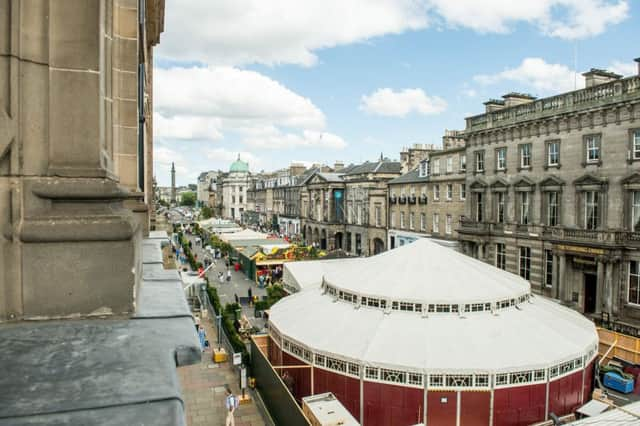Edinburgh clampdown on staging of events in public spaces


Organisers will urged to relocate activities outside the heart of the capital for the first time – despite protests from tourism leaders and festival chiefs and the events sector that the idea is impractical and could curb the economic impact of events.
Under the new ground rules, drawn up to ensure a “consistent approach” to events in public spaces, they will only be approved if organisers agree to meet noise curfews, strict limit will be imposed on the number allowed in the most sensitive areas, and more events will be encouraged outwith the peak summer period.
Advertisement
Hide AdAdvertisement
Hide AdOrganisers will have to meet strict criteria on whether a particular event is suitable, including whether it reflects well as Edinburgh’s status as a global festival city, a Unesco World Heritage Site or as “a sporting city”.
Events will only be able to be staged on George Street in future if a cultural activity or experience is the main activity, while only “low impact” events will be allowed in St Andrew Square outwith the winter festival, when it is home to an open-air ice rink.
The festivals will still be encouraged to use the Mound Precinct, next to the Scottish National Gallery in future, however the Grassmarket will only be used for a handful of “low impact” or “short duration” events to limit disruption to local residents.
The council wants to encourage greater use of Festival Square for “higher profile” events and festival activity, while Castle Street will also be touted for some events, including temporary art installations and exhibitions.
However, pop-up bars will not be allowed in any public spaces if council officials rule that they will become the main temporary use for a site.
Organisers will have 9pm noise curfews imposed for any events in the Royal Mile, Castle Street and the Grassmarket, while a 10pm limit is proposed for Festival Square and St Andrew Square.
An extensive consultation exercise carried out on the proposals involved more than 800 city centre residents. Three-quarters of those surveyed were in favour of a greater distribution of events to minimise disruption to local businesses and residents, rather than be concentrated in a few locations.
Advertisement
Hide AdAdvertisement
Hide AdA report for the authority, expected to be endorsed by councillors this week, reveals that tourism bodies, festival officials and event organisers had “significant “reservations” on the idea, citing concerns that “no alternative spaces actually existed”. The council was warned it would be very difficult to move events to spaces “that were not likely to be attractive to visitors”.
Paul Lawrence, the council’s director of place, said: “The protocol provides a framework by which the council and partners can better balance out the use of public spaces in Edinburgh, particularly in high demand spaces within the central area of the city.
“It seeks to balance and respect the needs of residents, partner organisations and stakeholders to ensure the city delivers the right ‘things’, taking place in the right spaces, and at the right time.”
The new rules
Event organisers will be informed of seven key principals for the use of public spaces in Edinburgh in future. The city council has warned that they will be given equal weight and prominence.
1. The use of space must balance the needs of different users.
2. The use of a space must support and reinforce the special quality of its surroundings.
3. Each space must have periods of “rest” when it is free from temporary events or activities.
Advertisement
Hide AdAdvertisement
Hide Ad4. The use of spaces should actively promote Edinburgh’s role and reputation as a globally recognised festival city, an historic with Unesco World Heritage Site status, and a sporting city.
5. The use of public space should encourage all people to access the city throughout the year.
6. The spread of activities to spaces across a wider area of the city will be encouraged.
7. Temporary activities or events in public spaces must be well managed.